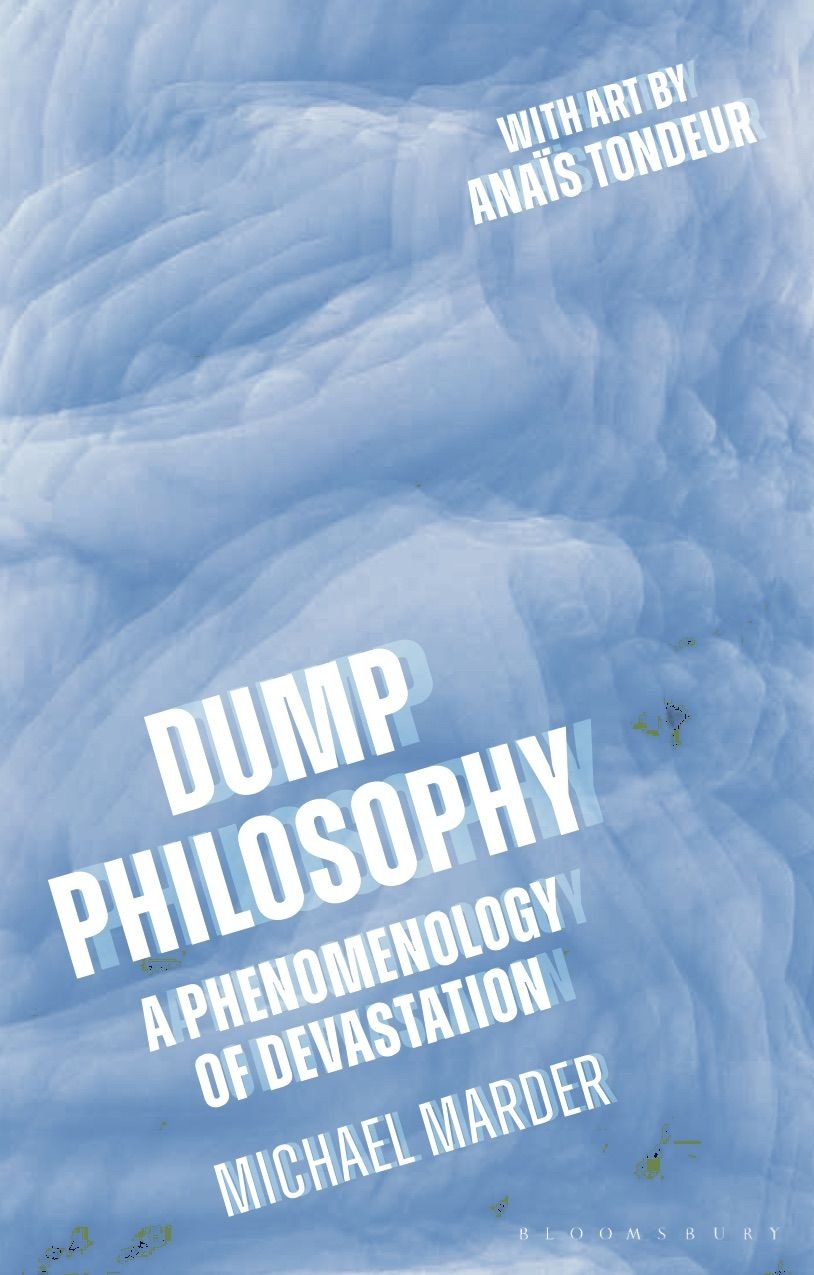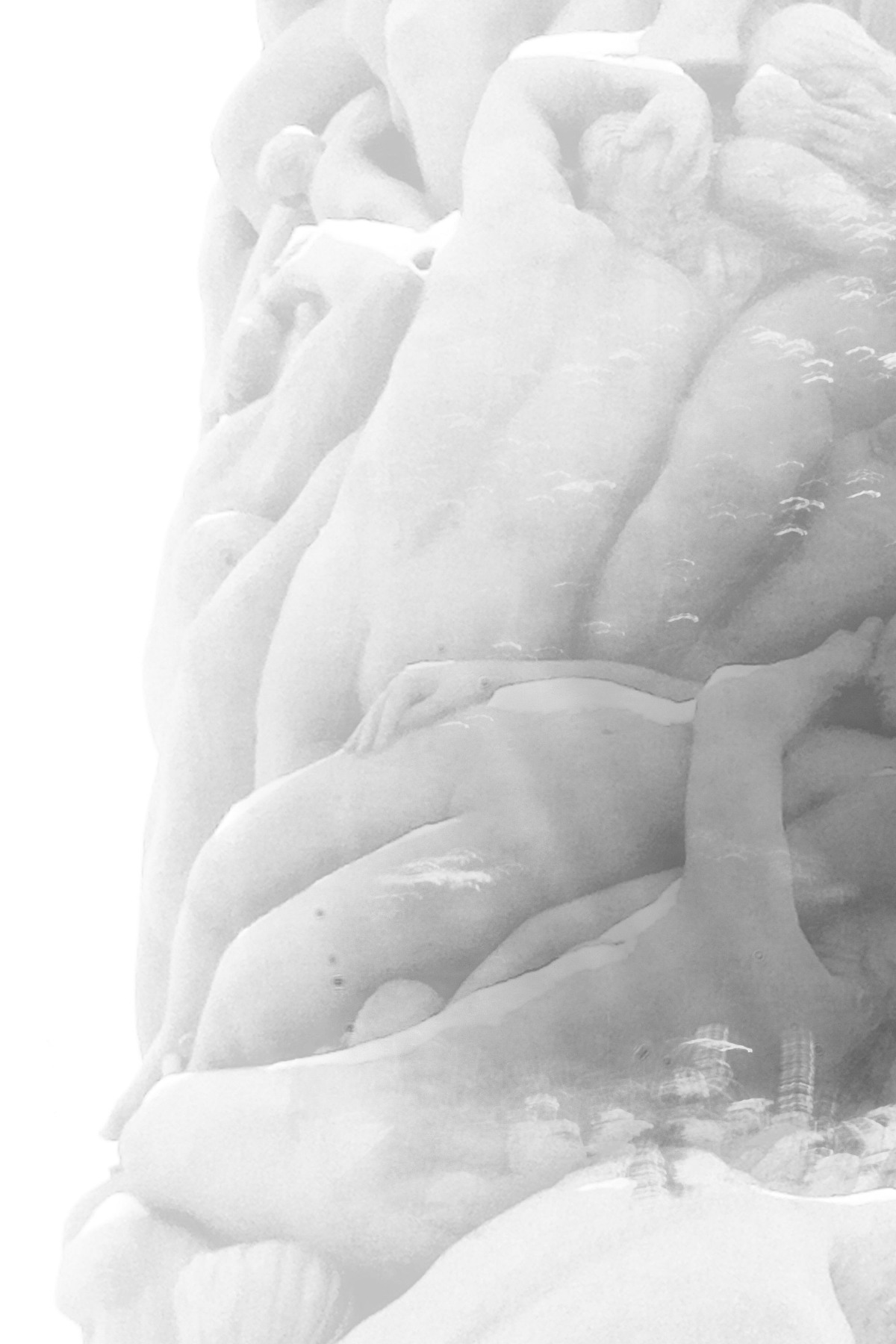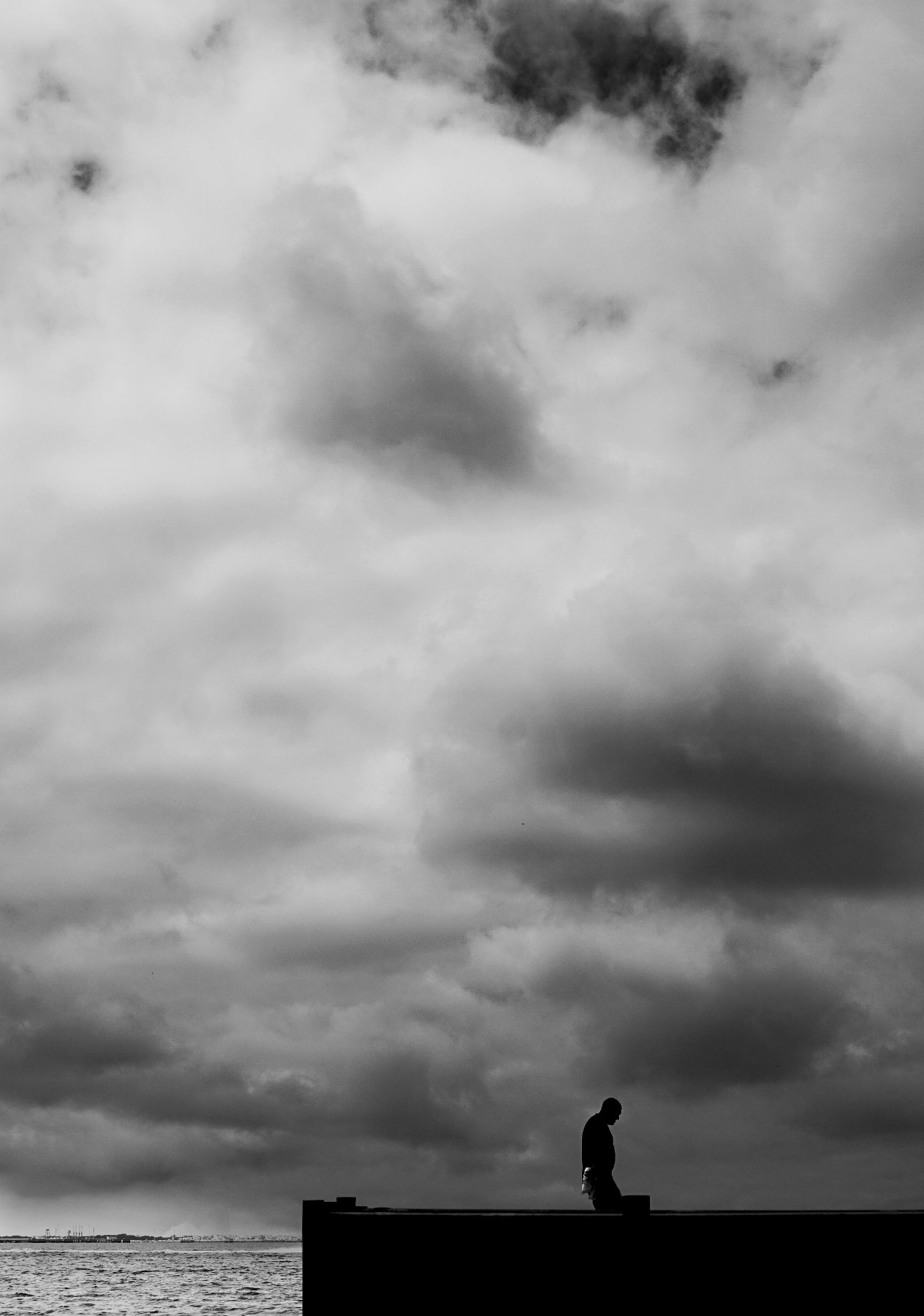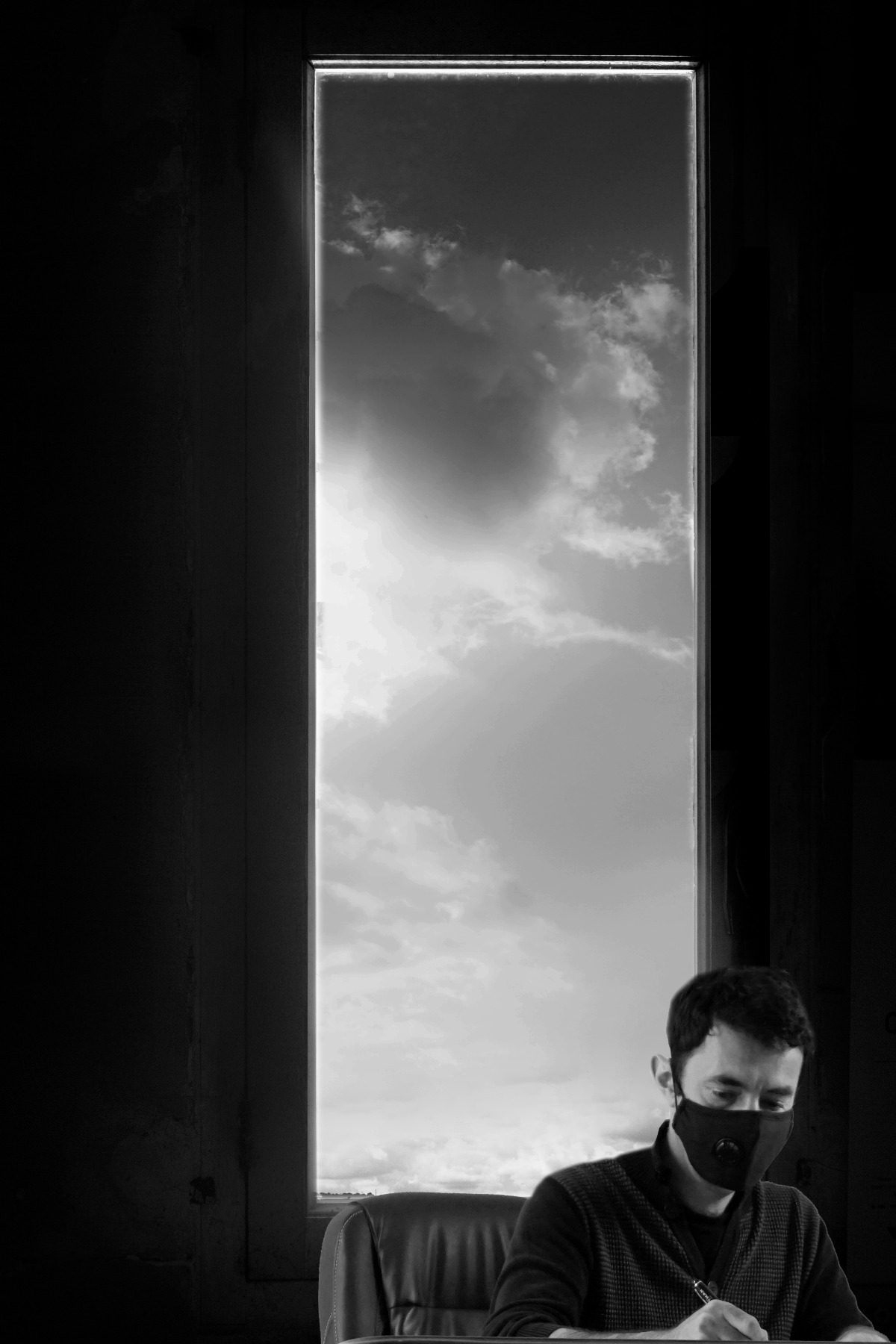
We are the dumped dumpers
Una Meistere
Q&A with philosopher Michael Marder about his new book Dump Philosophy: A Phenomenology of Devastation, just published by Bloomsbury
“Living in a dump, we are moved, produced, and reproduced by the dump, as by ourselves. For the most part, and despite being alive in the medical sense of the term, we are dying there, dismembered, thrown out, trashed, alienated from our alienation, coming to love it or altogether indifferent, apathetic, no longer involved, anesthetized with pharmaceutically and ideologically manufactured painkillers. The dump lives us, lives for us. It takes over the movement, production, and reproduction of world-destruction, wrecking the very being-world of the world. One might say that the dump is unloaded on the world's frame – which it disjoints – more than on what is framed as worldly.
“Metaphysical, religious, and moralizing proselytizers, living and dead, scream in our ears that we must wake up from the nightmare of our individual and collective lives while it is not too late, in time for repentance and conversion. They urge us to open the eyes of the mind or of the soul and finally to begin living, even if we are already in the concluding phases of our biological lives, abiding for the first time with truth or with god. As we shall see with yet another set of eyes, on the brink of every sort of vision turning inutile, the dump that lives us and lives for us is the coveted ‘true life’ realized. To be precise, the dump is that life's unforeseen side effect, the result of persistently devaluing and trashing existence here-below, of treating the world as a vast wastebasket or, at best, as a mere springboard for the noblest, luminous, ideal, eternal being,” writes philosopher Michael Marder in the first chapter (“Globality”) of his book Dump Philosophy: A Phenomenology of Devastation.

Being released at the end of 2020, when the world is experiencing the second wave of the pandemic, Marder’s book is a message that is both harsh and a call for humanity to recover itself on an existential scale. In the book, the Anthropocene is depicted as a global dump which wreaks havoc, causing disease and degrading our sensation, perception, and thinking, so that nuance is lost and ideas are reduced to soundbites in chains of free association. “We are the dumped dumpers,” says Marder.
Ranging across philosophy, theology, ecology, psychology and art, Marder argues in Dump Philosophy that the earth, along with everything that lives and thinks on it, is at an advanced stage of being converted into a dump for industrial output and its by-products feeding consumerism and its excesses.
“In drinking water, microplastics abound, and, by 2050, the total mass of synthetic, human-made materials in the oceans is predicted to surpass that of fish biomass,” writes Marder.
Describing the dump's fundamental characteristics and its effects on the body and the mind, he contemplates wider physiological, social, economic, and environmental metabolisms in the age of dumping, as well as the role of philosophy caught in its crosshairs. While surveying the devastation that is the reality of the twenty-first century, the book provides a frightening and yet intellectually spellbinding glimpse of the future.
Michael Marder is a Russian-born, New York-educated and currently Iberian-based philosopher whose work spans the fields of environmental philosophy and ecological thought, political theory and phenomenology. He is the Ikerbasque Research Professor of Philosophy at the University of the Basque Country (UPV/EHU) in Vitoria-Gasteiz, and the author of sixteen books and more than one hundred academic articles. This is second book on which Marder has collaborated with French artist Anaïs Tondeur (their first project was the book The Chernobyl Herbarium: Fragments of an Exploded Consciousness (2016), which centres on the nuclear disaster at Chernobyl on April 26, 1986, and which also left a deep mark on Marder’s own life.) Dump Philosophy: A Phenomenology of Devastation includes Anaïs Tondeur’s photographs created specially for the book; a portion of them, the so-called “aerodump” images, were printed with ink made in part from the carbon particles that Marder captured in a special mask while writing the book.
June 21, 2018, Cruz Quebrada, Carbon black level (PM 2.5): 2,1 µg/m, Carbon ink print. By Anaïs Tondeur 2018-20
How long did you work on this book, and why couldn't you not write it?
Every book takes its time to develop, mature, or ripen, depending on the topic at hand. The composition of Dump Philosophy took roughly four years, between 2015 and 2019, but its themes are very much connected to my other theoretical and practical concerns, for instance, with energy and dust, or with the vicissitudes of growth and the fate of life itself. As an epigraph, I cited Revelation 1:19: “Write, therefore, that which you see, and that which is, and that which will become after this.” When I imagined how this injunction could be addressed to me, I felt compelled to try my hand at an impossible task – to come up with a phenomenological description of devastation. Why am I saying that the task is impossible? Because the movement of devastation, which is sweeping us, along with the many other living beings and ecosystems, into its midst, renders vision (above all, theoretical vision, the vision that is designated with this Greek word theoria) nearly obsolete; because “that which is” borders on nothing; and because it is not at all clear that there will be something that will still “become after this.”
June 15, 2018, Cruz Quebrada, Carbon black level (PM 2.5): 9,1 µg/m, Carbon ink print. By Anaïs Tondeur 2018-20
Why did you choose the dump as a metaphor for our time?
Well, for me, the dump is more than a metaphor. Or, perhaps, I should say that it is, at the same time, both more and less than a metaphor. Succinctly (not so long ago, we would say “telegraphically”; nowadays, the right technological expression would be “in the length of a tweet”), I argue that, as a verb and as a noun, dump is the name for being in the twenty-first century. A dump is all that is, while dumping is all that is being done in all domains of existence, from the environmental to the psychological, from the economic to the political. In the book, I describe the "mechanics" of dumping in outline form as well as in excruciating detail. I am convinced that in those descriptions, one can readily recognise the predominant features of our time.
Drowning in, Anaïs Tondeur, 2018-20, Pigment print on Murakumo paper
How does living on a dump affect our body and mind? Is there any possibility to build a new human, a new thinking, a new philosophy on top of this on-going gigantic wastebasket?
I would say that our bodies and minds are not affected by the dump; rather, they are converted into dumps in their own right. Nothing and no one is exempt from this conversion. There are many factors in play: the elements we ingest and inhale, the toxicity that we unleash into the world and that ultimately boomerangs back to us, the torrents of information we are submerged by... Obviously, such developments are conducive to disease, whether physiological, psychological, or both. And something else is going on, too, in parallel – something subtler. For instance, the impoverishment of our sensorium as a result of hyperstimulation: what I call "impoverishment through excess" and the subsequent remaking of the senses and of the sentient body in the image of an abstract mind. As for hope, at which the second part of your question is getting, you will find a small glimmer in the book, but it requires difficult work. I will keep the suspense for now, mentioning only that my recommendation is to take the tendencies toward "dumpification" to their logical conclusion, at least as a thought experiment, in order to begin imagining not only "a new human", etc., but even the shape that basic resistance to these tendencies may assume.
Drowning in, Anaïs Tondeur, 2018-20, Pigment print on Murakumo paper
In Greek tragedies, the basic human sin is hubris – excessive pride leading to destruction. Could this crisis serve as a lesson in humility, or it is just an illusion, and we as a civilisation have entered the unstoppable process of self-devastation?
The hubris at stake in the dump that is our actuality is a perverse hubris. After all, the dump, with its basic nihilistic qualities of indifference and non-differentiation, does away with clear distinctions between the high and the low, whether they are moral, metaphysical, or even physical. True: fallenness maintains the traditional connotations of sinfulness, and the massive fall of the dumped fleshes out this staple theological theme. We are, as I put in the book, the dumped dumpers: in dumping (onto) the world, we dump (onto) ourselves. It may sound trite, but self-destruction is a direct outcome of the destruction of the other, especially when the massivity of its thrust makes the borders between self and other cave in. With regard to devastation, things are slightly different. I take this word in a properly Heideggerian and paradoxical sense, as the simultaneous negation and affirmation of the vast, the creative vector of destruction that shapes and molds its own unworld, silently slipping in the place of our reality. The possibility you referred to in your previous question is complicated by the technical sense of devastation.
Drowning in, Anaïs Tondeur, 2018-20, Pigment print on Murakumo paper
What does philosophy have to say about the role of art in times like these?
I am not sure as to what philosophy as such has to say about the role of art in these times. What Dump Philosophy might say is something like this: art is not exempt from the movement of dumpification, even if, like philosophy itself, it may ultimately come to see itself as being of the dump, not for the dump. You will have noticed that I am playing on the old religious motto (for instance, when it comes to the position of the Christian Church): to be in the world, not of the world. Still, I am recommending "of, not for". So, what's the difference? My idea is that philosophy and art have to begin with the acknowledgement that they (we) are of the dump – that is, not separated from it, and far from being the islands of purity in a sea of shit. The acknowledgement will go some way toward forming the self-consciousness and self-feeling of the dump, something that is largely missing today. Once this initial step is taken, we can start formulating and concretising our refusal to think and to create for the dump, of which we, nonetheless, are. We can then devise what in the book I term "the strategies of undumping" that, to my mind, must be as artistic as they are philosophical, which is why Dump Philosophy is a joint project I undertook with artist Anaïs Tondeur.
June 13, 2018, Cruz Quebrada, Carbon black level (PM 2.5): 9,1 µg/m, Carbon ink print. By Anaïs Tondeur 2018-20
In the last chapter of the book, in discussing the actual possibilities of dump philosophy, you mention Edgar Allan Poe's short story A Descent into the Maelström, a tale in which a man recounts how he survived a shipwreck and a whirlpool. Noting that “written in 1841, this text served in the twentieth century as a model for understanding political processes and the Information Age by the likes of Norbert Elias and Marshall McLuhan,” you write that “the renaissance of thinking in the maelstrom is a vector that would be welcome in the global dump, as well.” In the meantime, many of the brightest minds of our time are now talking about the necessity of building a new Bauhaus, or a new Black Mountain College, as it is clear that the only solution lies in interaction. A meeting between different fields of science could lead to a synthesis in which the new fields of science are in dialogue with philosophers, artists, architects, ancient knowledge and modern-day science, politicians, religious leaders, etc. Do you think there is a possibility of, and a necessity for, creating a 21st-century equivalent to the Bauhaus? If so, in which part of the world could it emerge?
In Dump Philosophy, I am skeptical about the possibility of extricating ourselves from the current predicament through new "enlightened" ventures somehow set apart from the world they (or we) would endeavor to save. It seems to me that much needs to be learned about the logistics and, indeed, the logic (that is to say, a particular mode of articulation) that could give rise to a fruitful trans-disciplinary or intercultural dialogue that would not contribute, despite the best of its participants' intentions, to further growth of the global dump. Instead of a vanguard political or artistic group much like the one that was at the forefront of the twentieth-century revolutions, I advocate something more modest, but also, perhaps, more difficult – namely, an identification with the dump, encapsulated in the assertion Je suis biomasse, "I am biomass". We urgently need to reconsider both life (bios) and thinking as mass: as heft, weight, the heaviness of matter itself, both undifferentiated and enormous, massified. What, then, would be the sense of being dumped together, of bearing the brunt of others (whether human or not) and bearing down upon them? How to reconstruct relationality and interactivity from this difficult standpoint that is neither a point nor something at a standstill? These, for me, are the questions guiding "the renaissance of thinking in the maelstrom". And my gut feeling is that they do not lead in the direction of a twenty-first-century equivalent of the Bauhaus.
Michael Marder. June 9, 2018, Cruz Quebrada, Carbon black level (PM 2.5): 6.5 µg/m, Carbon ink print. By Anaïs Tondeur 2018-20